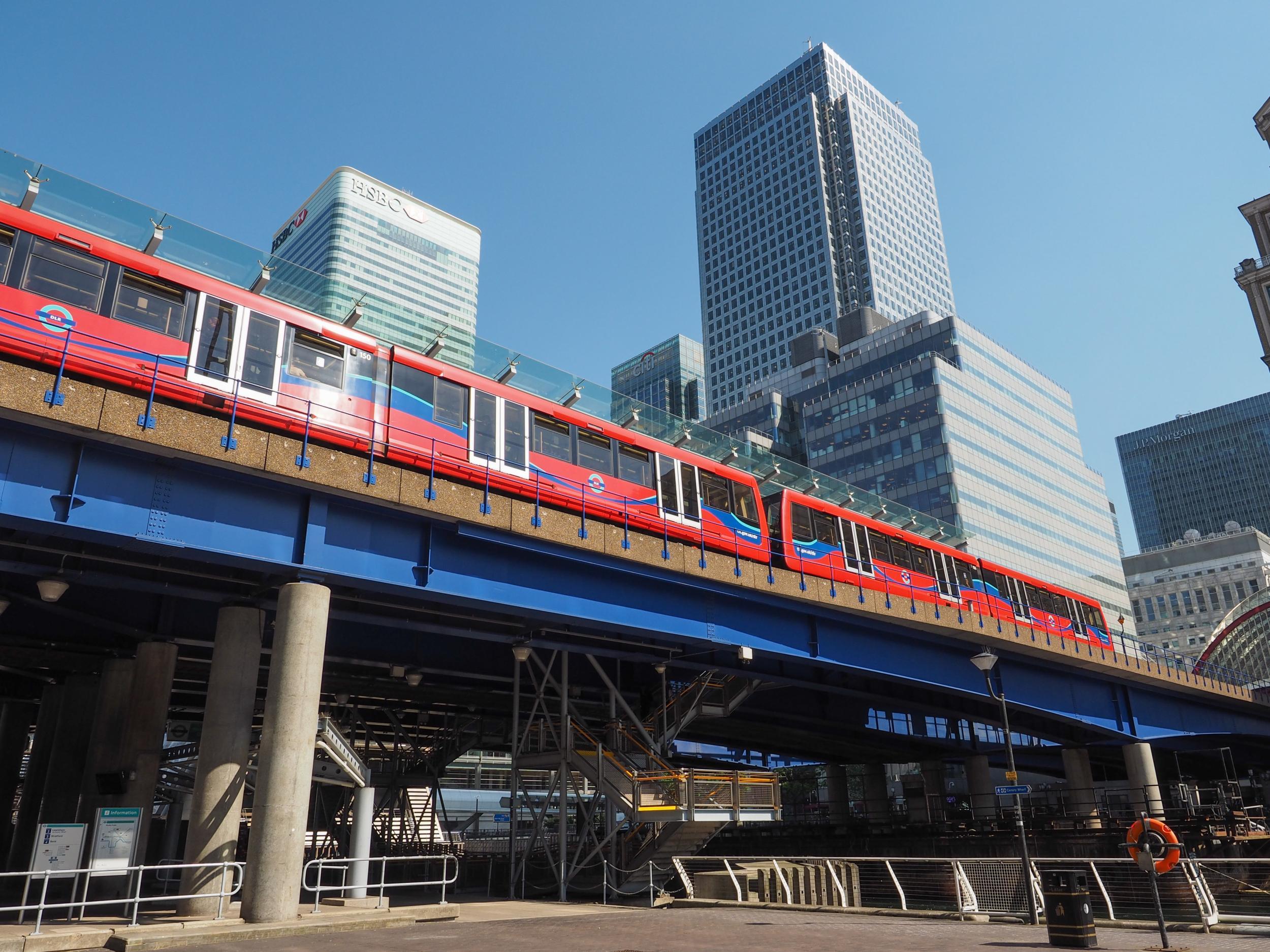The UK's easiest – and hardest – airports to reach
In The Independent’s annual survey, Southend remains in last place

London City airport has jumped to first place in The Independent’s annual survey of transport links to the UK’s leading airports.
Improved services on the Docklands Light Railway (DLR) saw the east London airport climb three places, above Southampton, Birmingham and Manchester.
Once again, though, the capital’s most far-flung airports – Luton, Stansted and Southend – occupy the last three places.
The survey rates airports on the off-peak frequency, journey time and cost of the main link to the city they serve. In February this year, the number of Docklands Light Railway (DLR) trains between London City airport and Canning Town – where passengers connect with the Jubilee Line – doubled. There is now one DLR train every five minutes. The off-peak fare with a contactless credit or debit card, or an Oyster card, is £2.80.
| Ranking | Airport name |
| 1 | London City |
| 2 | Southampton |
| 3 | Birmingham |
| 4 | Manchester |
| 5 | Heathrow |
| 6 | Norwich |
| 7 | Newcastle |
| 8 | Belfast City |
| 9 | Aberdeen |
| 10= | Doncaster |
| 10= | Glasgow |
| 12 | Bristol |
| 13 | Liverpool |
| 14 | Edinburgh |
| 15 | Leeds-Bradford |
| 16 | Inverness |
| 17 | Cardiff |
| 18 | Exeter |
| 19 | East Midlands |
| 20 | Prestwick |
| 21 | Gatwick |
| 22 | Belfast International |
| 23 | Bournemouth |
| 24 | Luton |
| 25 | Stansted |
| 26 | Southend |
A spokesperson for London City airport said: “Getting here is quick and inexpensive compared to other airports in the South East, with over two-thirds of passengers choosing the DLR to reach our front door. Looking forward, the Custom House Crossrail station and new river crossings will boost connectivity further still.”
Britain’s busiest airport, Heathrow, retained fifth place based on the published timetable for the Piccadilly line. But that Tube line is currently severely disrupted with about one in three trains out of service for repairs.
If the Heathrow Express is considered instead of the Tube, the airport finishes in the bottom one-third of the table. While the service to and from London Paddington is fast and frequent, the rail fare is the highest per mile in Britain.
Gatwick's rating is based on Southern trains from London Victoria. With a bitter dispute in progress, they are subject to delay and cancellation; if the Gatwick Express is used instead, the Sussex airport drops four places to to last-but-one in the table.
Away from the capital, some of the busiest airports in Britain performed relatively poorly. Bristol was placed 12th; it is the only one of the 10 busiest airports in the UK with neither a rail link nor dual-carriageway access.
The chief executive of Bristol airport, Robert Sinclair, has demanded Government help to improve links. He said: “The size and scale of Bristol is becoming more recognised nationally. We can’t continue that level of growth without appropriate surface access.”
Glasgow should improve on its 10th place when a “tram-train” link from the city centre via Paisley is completed.
Southend, which scores highly in many airport surveys for passenger friendliness, occupies last place. Its poor showing is a result of the journey time from London, averaging 54 minutes, and the commensurately high one-way fare of £16.80. But if the measurement is taken from Southend itself (five minutes and £3.10 away), rather than the capital, then the airport would take top spot in the survey.
Methodology: we chose the leading form of transport from the airport to the city; usually the fastest (a train where one is available) but in the case of Heathrow, the Tube.
We also examined the average journey time and departure schedule during the middle of the day; in cases such as Manchester and Gatwick, where there are multiple options, we chose fast services. We obtained the standard daytime fare, off-peak where avaulable. Then we multiplied the time, in minutes, by the average gap between services, in minutes, and by the fare, in pounds
Subscribe to Independent Premium to bookmark this article
Want to bookmark your favourite articles and stories to read or reference later? Start your Independent Premium subscription today.

Join our commenting forum
Join thought-provoking conversations, follow other Independent readers and see their replies